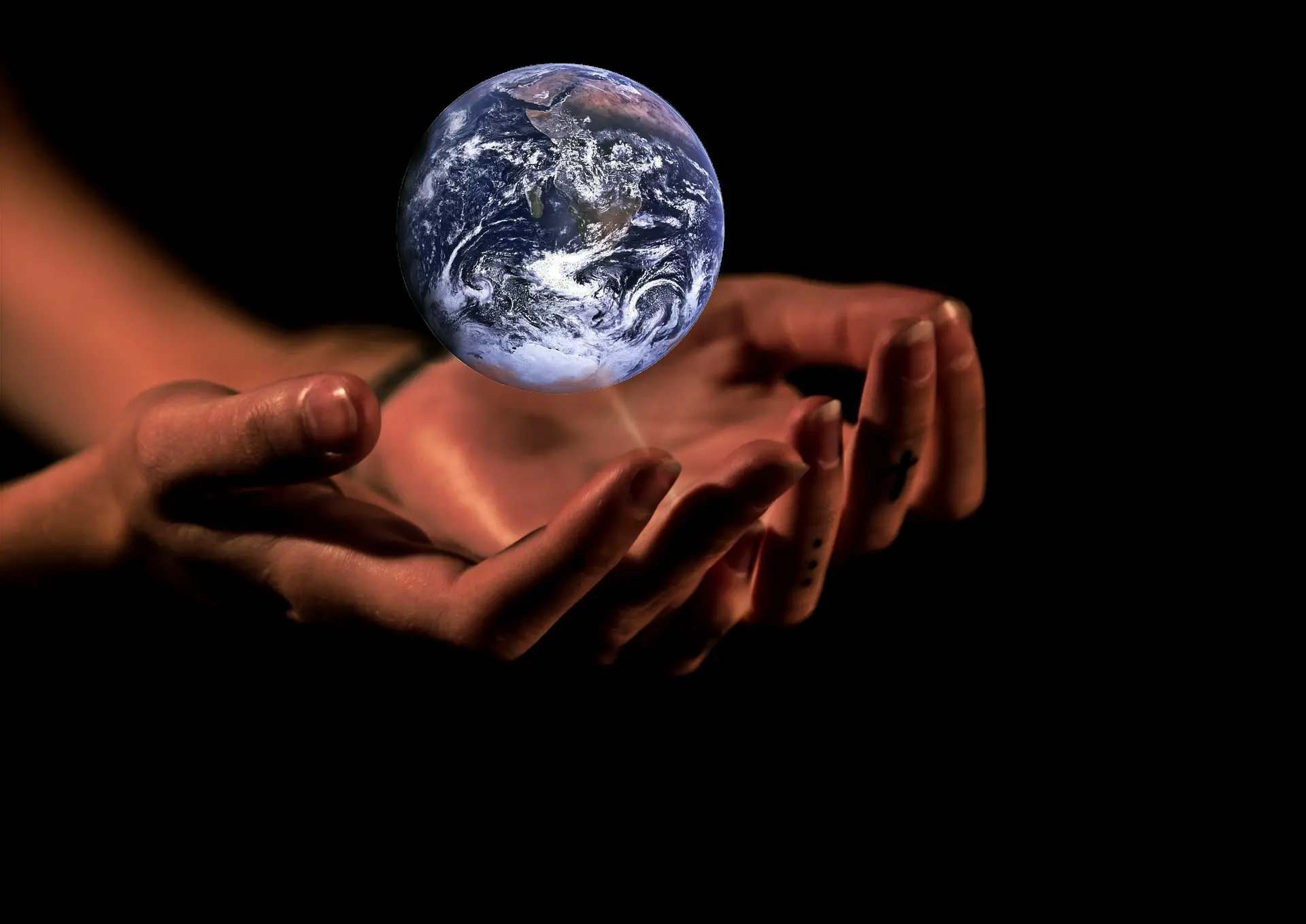How Do Climate Change Affect Our Skin Plus What To Do…

Have you ever considered how climate change might be affecting your skin? If not, you’re not alone. Many people don’t think about how the environment can affect their health. Changing weather is not only affecting the environment, but it’s also affecting our skin as well as our health.
The skin is the largest organ in the body and is constantly exposed to the environment, making it susceptible to damage from environmental stressors like pollution and UV radiation.
The sun is becoming more harmful as the ozone layer diminishes. This causes premature aging, wrinkles, and even skin cancer.
Should our precautions change as the climate does?
As global warming surges, so should our precautions. Just as we adjust our clothing to suit the weather, we must also take different measures to protect ourselves from the elements.
For example, as the average temperatures rise, we should be more diligent about applying sunscreen and wearing hats to protect ourselves from sun exposure. We should also be aware of the increased risk of dehydration and heat stroke, and take steps to stay cool and hydrated.
Likewise, as extreme weather events become more common, we need to be prepared for them. This means having an emergency kit on hand in case of a power outage or natural disaster, being aware of evacuation routes, and knowing how to safely put a shelter in place. Have an emergency plan in place in case you need to evacuate your home or seek shelter somewhere else.
Stay informed about the forecast and be aware of any warnings in your area. Don’t forget to stock up on supplies like food, water, and first aid kits so you’re prepared for anything. By taking these simple precautions, we can keep ourselves safe from the effects of global warming.
The impact of climate change on skin: How does the environment affect the skin?
There’s no doubt that the environment has a direct impact on the skin. From harsh UV rays to dry air and everything in between, the elements can take a toll. As the Earth’s temperature continues to rise, we’re seeing more extreme weather conditions that can wreak havoc on skin.
Whether it’s heat waves, high humidity, or cold snaps, each can cause its own set of skin problems. Below are a number of conditions that these changes can manifest on the skin.
1. Skin Cancer (Melanoma):
Skin cancer rates are rising, and melanoma is becoming more common. Scientists believe that the increase in skin cancer cases is due to the increased UV radiation that the earth is receiving as a result of global warming.
This rise in UV radiation is causing damage to the DNA of our skin cells, which can lead to skin cancer. Melanoma, in particular, is thought to be linked to weather changes, as it is the most deadly form of skin cancer.
2. Premature aging
The study, published in the journal “PLOS ONE”, found that people who live in areas with high levels of air pollution and UV radiation are more likely to develop wrinkles and other signs of premature aging. The researchers believe that these environmental stressors cause inflammation and oxidative stress, which can lead to collagen breakdown and skin cell damage.
3. Swimmer’s itch
Swimmers itch is a skin rash caused by an infestation of the Larva Migrans parasite which is found in fresh or salt water and can burrow into the skin of humans, causing an itchy rash.
The impact on the environment is having an adverse effect on human skin. The rise in temperature and humidity is creating a conducive environment for the Larva Migrans parasite to thrive. As a result, there has been a significant increase in cases of swimmer’s itch reported globally.
4. Cellulitis:
Cellulitis is a common infection of the skin and underlying tissue that occurs when bacteria enter through a break in the skin. The symptoms of cellulitis include redness, swelling, pain, and warmth in the affected area. These changes can increase the risk of cellulitis by causing more breaks in the skin due to dryness and cracking.
5. Sepsis
Increased pollution levels can lead to increased skin infections causing irritation, rashes, acne, etc.
A study, conducted by the University of Manchester team of researchers, looked at the effects of environmental factors on the skin. The findings showed that exposure to high temperatures and humidity can cause the skin to become more susceptible to infection.
If skin health is not adequately protected, this could lead to a rise in cases of sepsis, which can be fatal.
6. Skin rash:
A new study has found that it could lead to an increase in skin rashes. The research was conducted by the University of Manchester and was published in the journal of Clinical and Experimental Dermatology.
The study found that there is a link between warmer temperatures and an increase in the number of people suffering from skin rashes. Dr. Sarah Wakelin, who led the research, said that this is because warmer weather can trigger an immune response in the skin.
This means that people who are prone to skin problems may find that their condition worsens as the planet gets hotter.
7. Eczema:
It can exacerbate existing skin conditions like eczema and psoriasis. It can trigger eczema flare-ups. And when the air is dry, it can make the skin feel tight and irritated.
8. Psoriasis:
For people with psoriasis, the condition can be exacerbated by changes in temperature and humidity. In addition, UV radiation from the sun can trigger psoriasis flare-ups.
People with psoriasis should be aware of how changes in the weather can affect their condition and take steps to protect their skin from further damage.
9. Lupus Erythematosus
Lupus erythematosus is another condition that has been linked to weather changes. This autoimmune disease causes inflammation and damage to the skin. Studies have shown that people with lupus erythematosus are more likely to experience flares during periods of high environmental stress, such as heat waves or air pollution events.
10. Fungal Overgrowth:
Warmer temperatures and increased humidity can lead to fungal and bacterial overgrowth, which in turn can cause skin conditions such as athlete’s foot, ringworm, and cellulitis.
11. Sunburns:
Extreme weather conditions like heat waves can cause sunburns, dehydration, and chafing.
Not only are these conditions uncomfortable, but they can also lead to long-term damage.
FAQ
Can a change in environment cause skin rashes?
Yes, a change in environment can definitely cause skin rashes. For instance, when you move to a new place, your body is exposed to different environmental factors that it may not be used to. This can cause your skin to react and break out in rashes. This also happens with global warming.
Can it cause itchy skin?
A new study has found that it can cause itchy skin. The study, which was conducted by researchers at the University of California, found that people who live in areas with high levels of air pollution are more likely to suffer from itchy skin.
The study’s lead author, Dr. Michael Zarrabian, said that the findings could have implications for public health. “If we can show that air pollution is causing people to itch, then we can take steps to reduce exposure and improve public health,” he said linking the two and proffering some solutions.
Dr. Zarrabian and his team looked at data from the National Health and Nutrition Examination Survey, which included information on more than 4,000 people. They found that those who lived in areas with high levels of air pollution were more likely to report itchiness than those who lived in cleaner areas.
Skin conditions made worse by climate change
1. Acne
Acne is one of the most common skin conditions that are made worse by it. The warm weather causes our sebaceous glands to produce more oil, which can lead to clogged pores and breakouts.
2. Atopic Dermatitis (Eczema)
Eczema is another condition that is exacerbated by the changing climate. The dry, hot air can cause the skin to become irritated and inflamed.
3. Psoriasis
Psoriasis is also affected by climatic changes. The increased heat and UV exposure can trigger flare-ups and make the symptoms worse.
4. Pemphigus Vulgaris (Autoimmune blistering disorder)
A study conducted by the University of California, San Francisco, found that pemphigus, a rare and potentially fatal skin condition, is on the rise in areas where the climate is changing.
Pemphigus is an autoimmune disease that causes the body to attack its own healthy tissues. The disease can lead to blistering and open sores on the skin. In severe cases can be fatal.
The study found that pemphigus cases are rising in areas where the climate is changing rapidly. The researchers believe that this is because the disease thrives in warm, humid environments. The findings suggest that it may be making pemphigus more common and more severe.
5. Vitiligo
As the climate continues to warm, those suffering from vitiligo may find their condition worsening. This is because warmer temperatures can cause the body to produce more melanin, which can then lead to patches of skin becoming darker.
Those with vitiligo may find that their symptoms are worse in the summer months when the weather is hotter. They may also find that their skin is more sensitive to sunlight and that they are more prone to sunburn.
6. Lyme disease
The condition is becoming more common in areas where it was once rare. The reason for this is that the ticks that carry the disease are able to survive in warmer climates. This means that more people are at risk of being bitten by a tick and contracting the disease.
7. Cancers
Skin cancers like melanoma, basal cell, and squamous cell carcinomas are also on the rise, thanks in part to environmental change. Ultraviolet (UV) radiation from the sun is a known risk factor for all three types of skin cancer. And as the Earth’s atmosphere gets warmer and thinner, more UV radiation is able to reach the ground.
8. Hand, Foot & Mouth Disease
The disease is caused by a virus (enterovirus) that thrives in warm, humid environments, and with global temperatures on the rise, the virus is able to survive and spread more easily.
The condition is most common in children under the age of five and can cause fever, sore throat, and a rash on the hands, feet, and mouth. In severe cases, it can lead to neurological problems or even death.
9. Valley fever
Valley fever is a serious condition that can cause fever, rash, and even death. A new study has found that it could be making skin conditions like valley fever worse. If global warming makes it easier for the fungus to grow, we could see more cases of valley fever in the future.
10. Monkeypox
A severe skin condition can lead to death if not treated properly. The symptoms include fever, headaches, muscle pain, and a rash that covers the body. A new study has found that it is making skin conditions like this worse.
The research, which was conducted by the University of Edinburgh, looked at how changes in temperature and humidity can affect the spread. The team found that as the climate gets warmer and more humid, the virus that causes monkeypox can spread more easily from animals to humans.
How to protect your skin from the effects of climate change in today’s world
The good news is that there are things we can do to protect ourselves from the harmful effects on our skin.
1. Use sunscreen regularly:
UV radiation from the sun is one of the main causes of skin cancer, and it is only getting stronger as the ozone layer continues to thin.
Using sunscreen and avoiding sun exposure during peak hours are just a few ways to reduce your risk of developing skin cancer. Be sure to use broad-spectrum sunscreen with an SPF of at least 30 every day, even on cloudy days.
2. Stay hydrated:
Drinking plenty of water helps keep your skin cells healthy and prevents them from drying out. This is especially important in hot, dry climates where dehydration is a risk.
3. Using a humidifier:
Staying hydrated, and using a humidifier, gentle cleansers and moisturizers will help protect your skin from untoward effects. If you do develop a skin condition, be sure to see a dermatologist for treatment.
4. Limit your time in direct sunlight.
Wear hats and protective caps and sun shields if you must walk at the peak of the sun. Reducing your exposure levels can help reduce the negative effects of the environment on the skin.
5. Choose natural skincare products.
Many commercial skincare products contain chemicals that can actually aggravate skin conditions like eczema and psoriasis. Opt for natural products instead, which will be gentler on your skin and protect you from ultraviolet radiation’s harmful effects.
6. Consume healthy diets rich in fruits and vegetables:
Eating a healthy and balanced diet that is rich in fruits and vegetables is a smart way to stay healthy and maintain good skin health. Fruits and vegetables are rich in antioxidants that fight against inflammatory agents and free radicals which cause diseases and various skin conditions.
Conclusion:
Climate change is a huge problem that is affecting us in many ways, one of which is through our skin. We need to be more aware of the ways we are contributing to these changes and work together to find solutions. Only by working together can we hope to mitigate the effects and make the world a better place for future generations to thrive in.




